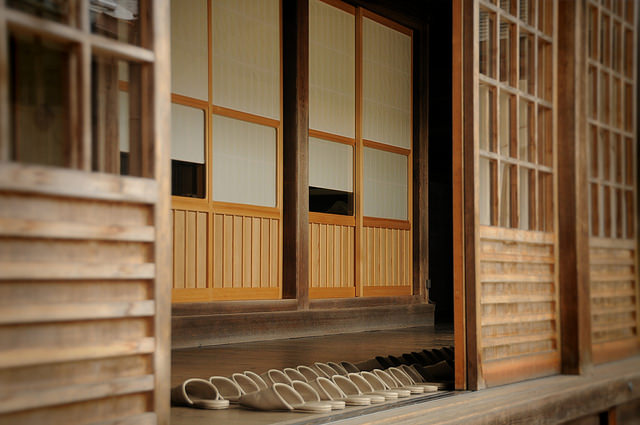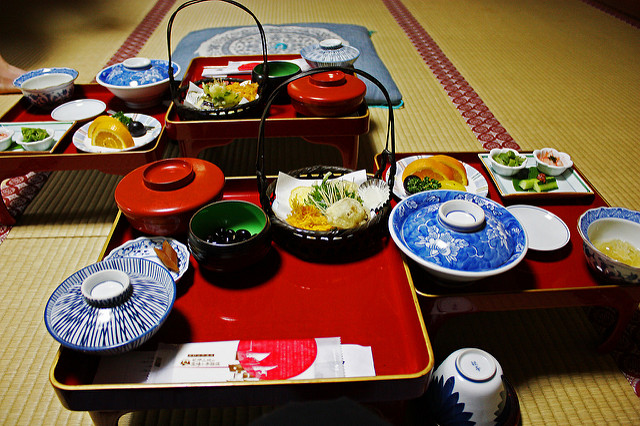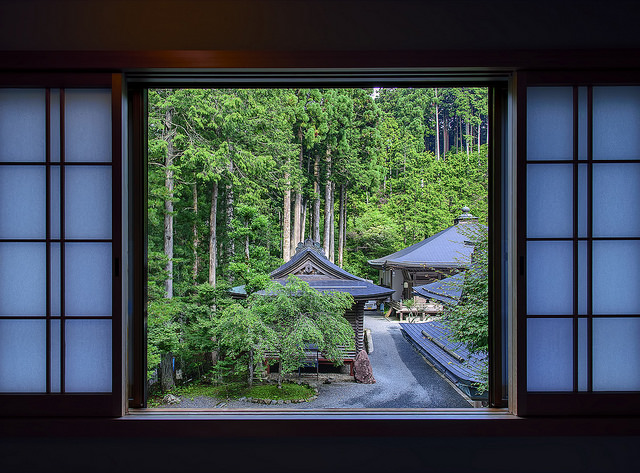
photo by Karolina Lubryczynska
2020 Tokyo Olympic Games is not so long ahead, the number of inbound tourists visiting Japan has been increasing every year. While hotels offering multi-lingual services and traditional Japanese style ryokans are most commonly chosen by those tourists for accommodations, did you know other accommodation called “Shukubo” is attracting attentions from overseas. Shukubo is a temple lodging run by a Buddhist temple. The secret behind popularity of temple lodging is special experiences of Japanese Buddhism based on teaching of each sect. According to the increasing popularity of Japanese tourism, temple lodging, that offers extraordinary experiences, is rapidly gaining attentions from inbound visitors.
What is temple lodging (Shukubo)?
Originally, temple lodgings were recognized as accommodations for Buddhist monks and pilgrims. In the Heian period, visiting temples became common activities among other group of people such as warriors and peerage as well as average citizens, then temple lodgings as well became open to wider range of visitors. In recent years, temple lodgings have been secretly popular among Japanese tourists visiting temples and shrines. Along with rather lower accommodation fees, the biggest advantage of temple lodging is experiencing genuine Buddhist activities. Also, unlike ordinary hotels and ryokans, guests must follow the rules set by each temple such as meal time, curfew and participation in Morning Prayer.
Advantage 1: Delicious vegetarian meals

photo by Andrea Schaffer
Temple lodging include dinner and next morning breakfast most of the time. All meals are Buddhist cuisine cooked in accordance with Buddhist principles. Killing of animals is strictly banned in Buddhism, therefore eating animal source food is also prohibited. That means, all meats including sea food as well as dried fish broth, which is commonly used in traditional Japanese cuisine, cannot be used for Buddhist cuisine. However, broth is heavily used in Buddhist cuisine similarly to any other Japanese dishes. They simply make full use of vegetable ingredients such as seaweed or dried mushrooms to create great flavor and taste.
Also, having meal is recognized as very important part of daily life according to Buddhism teaching because eating is considered as taking lives of other livings. Considering and practicing to utilize every ingredients with minimal waste of food is part of their disciplines. Japanese Buddhist cuisine has been developed by a number of monks with a great deal of efforts over the long time of period.
Advantage 2: Experience of Japanese Buddhism
Unlike other ordinary accommodations, temple lodging is not just about staying overnight at a temple. Guests are typically required to participate activities based on daily Buddhist routines around mealtime in evening and following morning. Activities may vary depending by temples but common examples of such activities include Zen sitting meditation, attending prayers, Sutra copying (shakyo), water fall practice, cleaning service in the morning. Some temples even offer a cooking class of Buddhist cuisine. In addition there may be preach by a Buddhist monk or a grace before meal. Temple lodging is a great place to experience Japanese Buddhist practices which sometimes are useful to meditate and relax your mind, and to understand Japanese traditions and cultures that have been developed through Buddhist activities.
Advantage 3: Valuable artworks

photo by Al Case
Temple lodgings typically open a part of temple building while some of them have independent building outside the temple in order for accommodate guests. Most of the temples are traditional wooden buildings and maintained by monks who reside there with great care. Furniture and exteriors in Buddhist temples are generally simple and nothing glamorous as it is a place for religious practices. However, you can still see many valuable artworks such as beautiful pictures on sliding doors, Japanese garden and statues reflecting Buddhist’s point of view. Also, the temple itself is often a very old wooden architecture, though toilets and bathrooms are renovated in modern style and there are air-conditioners in guest rooms. There is a unique atmosphere in a temple lodging that ordinary hotels and ryokans never have.
Temple lodgings offering bilingual services
As temple lodging is gaining more popularity from foreign tourists, it is not so uncommon they have more non-Japanese guests than Japanese ones. To help guests from overseas understand Japanese Buddhism better, Ekoin, a temple lodging in Mt. Koya, has English-speaking monks to guide them during their stay. Responses to internationalization can be seen in other temple lodgings as well. For example, some monks self-study English to communicate with guests, or there is even a temple lodging that has a foreign national monk who speaks multi-language. Bookings are to be made over the phone or via Japanese homepages. If you are not confident in Japanese language, some temples are listed on a portal website like “trivago”.
What we think, we become
Rapidly gaining in popularity from inside and outside of Japan, the highlight of staying in a temple lodging is genuine experience of Japanese Buddhism. Most of temples offer two meals plan at rather cheaper rate compared to similar plans of hotels and ryokans. So, why don’t you stay in a temple to discover the world of Buddhism that you can never know by just touring around temples in Japan?
Related Article:
Soaked in the world of Buddhism: Top 4 temple lodgings with English speaking monks
